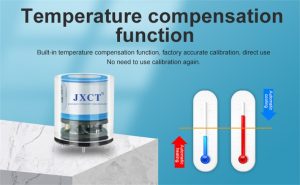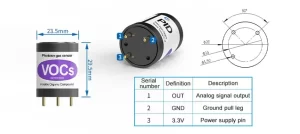Gas sensor technology has seen significant advancements in recent years, particularly in the field of environmental monitoring. With the increasing concern over air and water pollution, there is a growing demand for accurate and reliable gas sensors that can detect and measure various pollutants in the environment. These advancements in gas sensor technology have the potential to greatly improve our ability to monitor and mitigate environmental pollution, ultimately leading to a healthier and more sustainable planet.

One of the key advancements in gas sensor technology is the development of more sensitive and selective sensors. Traditional gas sensors often suffer from cross-sensitivity, meaning they can be triggered by multiple gases, leading to inaccurate readings. However, recent advancements in sensor materials and design have led to the creation of sensors that are highly selective to specific gases, allowing for more accurate and reliable measurements. For example, metal oxide sensors have been enhanced to improve their selectivity, making them suitable for detecting specific pollutants such as carbon monoxide and nitrogen dioxide in urban environments.
Another significant advancement in gas sensor technology is the miniaturization of sensors. Miniaturization allows for the development of portable and wearable gas sensors that can be easily deployed in various environmental monitoring applications. These compact sensors are particularly useful for monitoring air quality in urban areas, where pollution levels can vary significantly from one location to another. By using miniaturized gas sensors, environmental researchers and policymakers can gain a more comprehensive understanding of pollution hotspots and take targeted actions to reduce pollution levels.
Furthermore, advancements in gas sensor technology have also led to the development of wireless and networked sensor systems. These systems allow for real-time monitoring of environmental pollutants over large geographical areas. By deploying a network of interconnected gas sensors, environmental agencies can continuously monitor air and water quality, detect pollution events, and track the movement of pollutants in the environment. This real-time data can then be used to make informed decisions and implement timely interventions to protect public health and the environment.
In addition to improved sensitivity, selectivity, and miniaturization, advancements in gas sensor technology have also focused on enhancing sensor durability and stability. Environmental monitoring often involves harsh and challenging conditions, such as high humidity, extreme temperatures, and exposure to various chemicals. Therefore, gas sensors need to be robust and reliable in order to provide accurate measurements over extended periods of time. Recent developments in sensor materials and packaging have resulted in sensors that are more resistant to environmental stressors, ensuring their long-term performance in monitoring applications.
Moreover, advancements in gas sensor technology have also led to the integration of data analytics and machine learning algorithms into sensor systems. By analyzing the complex data generated by gas sensors, researchers can gain deeper insights into pollution patterns and sources. Machine learning algorithms can also be used to predict pollution trends and identify potential environmental hazards, allowing for proactive measures to be taken to prevent pollution incidents.
The advancements in gas sensor technology have not only improved the capabilities of environmental monitoring but have also opened up new opportunities for research and innovation. For example, the development of gas sensor arrays, which consist of multiple sensors with different selectivities, can provide a more comprehensive understanding of the composition of environmental pollutants. By analyzing the responses of multiple sensors, researchers can identify specific gases and their concentrations, leading to more accurate and detailed environmental assessments.
Furthermore, the integration of gas sensor technology with other environmental monitoring technologies, such as remote sensing and satellite imaging, can provide a more holistic view of environmental pollution. By combining data from different sources, environmental researchers can create comprehensive pollution maps and models, enabling them to better understand the complex interactions between various pollutants and their impact on the environment.

In conclusion, the advancements in gas sensor technology for environmental monitoring have the potential to revolutionize our ability to detect, measure, and mitigate environmental pollution. With improved sensitivity, selectivity, miniaturization, durability, and integration with data analytics, gas sensors are becoming more powerful tools for environmental researchers and policymakers. These advancements are paving the way for a more sustainable and healthier planet, where pollution levels can be effectively monitored and managed to protect public health and the environment. As technology continues to advance, we can expect to see even more innovative solutions that will further enhance our ability to monitor and safeguard the environment.
 : +86 155 8830 2704
: +86 155 8830 2704 : jxdziot@gmail.com
: jxdziot@gmail.com
